A border wall is headed for Laredo—and the only thing likely to stop it is time.
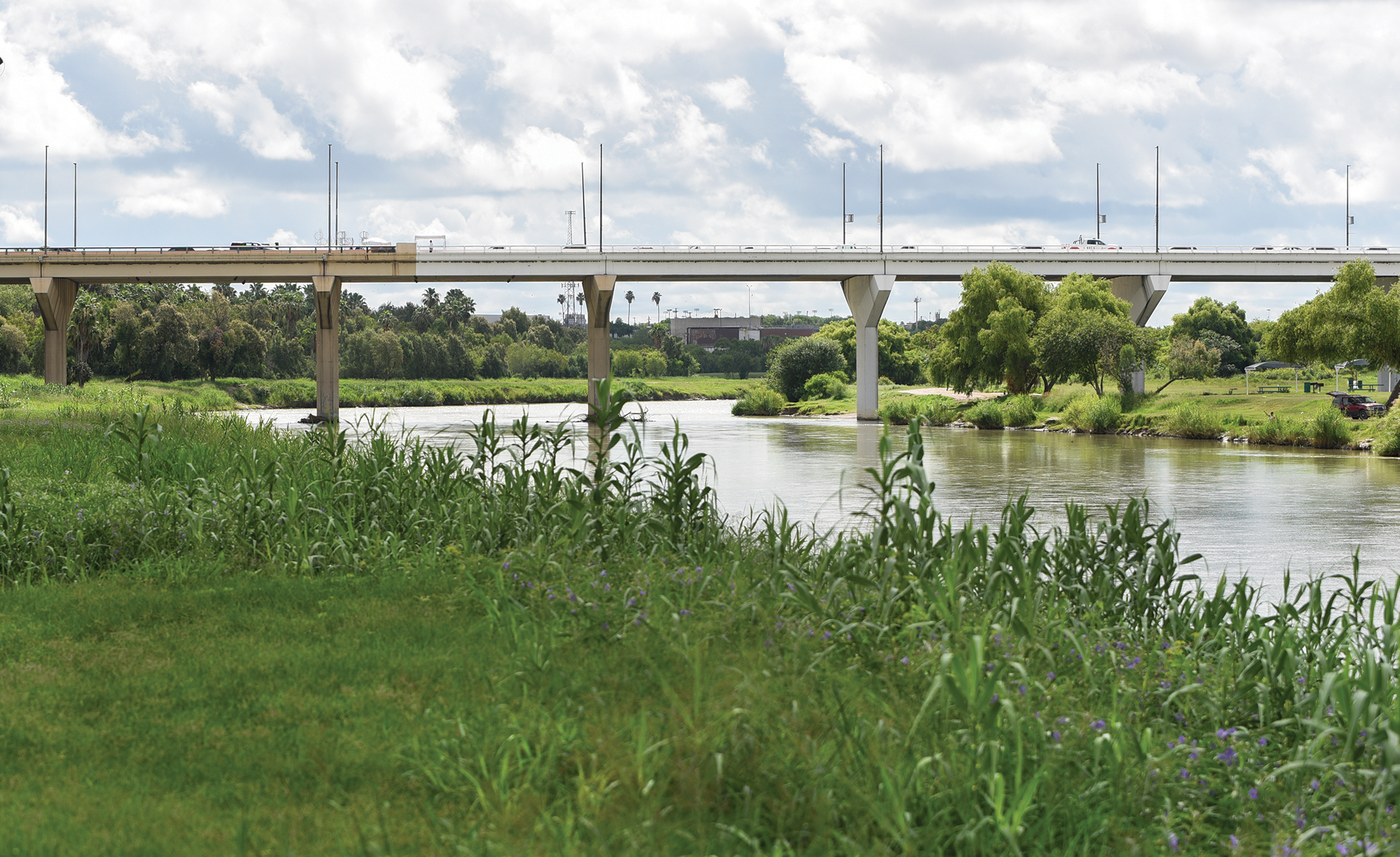
By Gus Bova
July 20, 2020
It starts at sunrise. Two lines of teenagers in military garb form on either side of the international bridge between Laredo and Nuevo Laredo. A February chill permeates the air high above the placid Rio Grande. From the United States, customs officials in their dark blue uniforms and Border Patrol agents in their trademark olive green stream onto the bridge. From Mexico come camo-clad soldiers. The bridge becomes a thicket of rifles and sabers.
It’s the climactic moment of Laredo’s strange, 123-year-old tradition: the nation’s largest celebration of George Washington’s birthday, a monthlong display of both patriotism and binational unity. Even Speaker Nancy Pelosi is there. Sporting a blue sash identifying her as the festival’s señora internacional, Pelosi takes the stage. “This is a vibrant community with a border going through it,” she avows. At last, two pairs of elaborately dressed children, hailing from both sides of the Rio Grande, step shyly to the bridge’s midpoint and embrace one another. An abrazo. The camera shutters roar like gunfire.
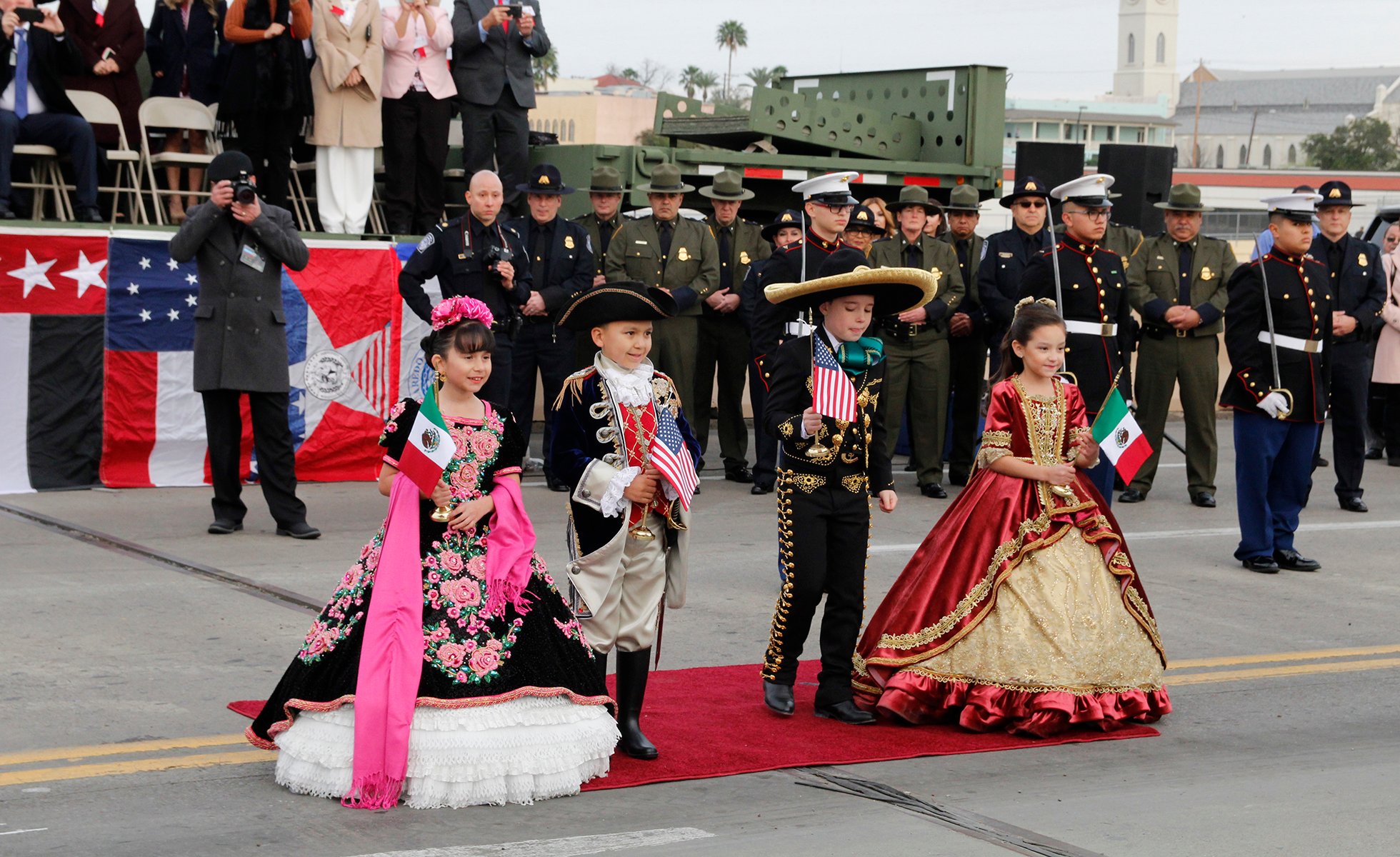
At this point, you’re supposed to feel a sense of the unbreakable bond between these sister cities at the border—los dos Laredos, one community sharing a river. The sentiment was already hard to summon: The hugging children are surrounded by the very officers who enforce the hard line between nations, turning away desperate refugees at the same bridge. Now, there’s yet another tension. As Pelosi speaks, protesters paddle a pair of kayaks behind her on the river below. Drawing nearer, the crew catches the attention of security guards by the stage, then the press. Between the vessels, the agitators have stretched a white banner that reads in red lettering: “No Border Wall.”
This year, a hulking fence of steel and concrete is finally headed for Laredo. The wall threatens to upend long-standing plans to develop the city’s waterfront, and, in surrounding areas, the fence would isolate livestock from drinking water and destroy scenic views. Despite opposition from local political and business elites, the wall is coming with the blessing of Pelosi herself.
Since 2006, when the Bush administration began building a border wall in earnest, the federal government has left Laredo alone, save for a short stretch of fairly ordinary fencing along the campus of Laredo College. The city’s a nightmare for wall builders. Because Laredo’s built right up to the bank of the Rio Grande, the government must risk building in the flood plain or route the barrier through homes and commercial buildings, and because the city has no river levees, the government can’t build on or behind dikes, as it has elsewhere in Texas.
Late last year, however, the dam broke.
In December, over objections from Hispanic and progressive lawmakers, Pelosi’s House approved about $1.4 billion in wall funding, much or all of it headed for the Laredo area. With that money, plus cash President Trump siphoned from the Department of Defense, Customs and Border Protection (CBP) plans to wall off most or all of Webb County—which includes Laredo—along with at least 18 miles of neighboring Zapata County.

All along the Texas border, you’ll find a sense of indignation about the wall. Who is Trump, people ask, to seize their private property, to tell them what they need on land they’ve occupied for generations? But in Laredo—a city of 260,000 that lives off international trade and prides itself on its 265-year-long history—the pique is particularly palpable.
“It’s going to feel like a jail for us,” says Mercurio Martinez III, a city council member whose family traces its lineage back to some of the earliest colonizers of Zapata and Webb counties. “It might be a race thing,” he says of D.C.’s attitude toward local leaders. “Maybe they think: ‘Those Hispanics down there, they don’t know any better; we have to make the decisions for them.’”
Tricia Cortez, director of the Laredo-based environmental group the Rio Grande International Study Center (RGISC), sees the wall as fundamentally alien to the area. “For us, it’s so foreign, so egregious,” says Cortez, who was one of the protesters in kayaks during the bridge ceremony. “It’s like an invasion.”
Nevertheless, the wall is coming for Laredo—and the city will be hard-pressed to stop it. As other Texas communities learned years ago, the feds have extraordinary powers to seize property and waive burdensome regulations in pursuit of a border barrier. Laredo’s best chance is to delay past November, when a Democrat might unseat Trump. As if to underscore the point, CBP announced in May the first border wall contract for the area: 14 miles to be located somewhere in Webb County, with construction set to begin in January 2021. Wall opponents will have to curb a presidential administration hellbent on fulfilling old campaign promises, and even if a Democrat wins, they’ll have to hope the new president would take the unprecedented step of stopping the wall in its tracks.
***
Laredo exists, at least in part, thanks to a shallow limestone ford. The low-water crossing, located above the bend in the river around present-day Laredo College, attracted a Spanish captain to settle there in 1755. Laredoans know the spot as el paso de los indios, a nod to the fact that Europeans merely re-discovered it. The settlement was marginal to the empire, a remote redoubt in the battle to dispossess Indigenous people, but it had inherent utility as a place of passage. Ever since, the city’s major developments have hinged on means of crossing the Rio Grande: the arrival of the railroad in the late-19th century and, later, the highways.
“Laredo’s identity was always that it was a transit point,” says Stan Green, a prominent local historian. Post-NAFTA, Laredo has grown ever more central to international commerce: What was the poorest major city in the United States in 1990 is now regularly the top trade hub in the nation. Poverty, still high, has decreased. In 30 years, the population has more than doubled. Ninety-five percent of Laredoans are Hispanic, and around 1 in 4 is foreign-born. Skepticism of barriers is all but written in the city’s DNA.
During my February visit, my last reporting trip before the COVID-19 shutdowns, I swing by the Webb County Heritage Foundation near Laredo’s central plaza. I’ve come to talk to Margarita Araiza, the foundation’s director, about her plan to seek state designation for several cemeteries near the river to ensure they’re undisturbed by the wall. But soon, we’re discussing a longer history. The nearby San Agustín plaza, home to a soaring cathedral and a towering statue of the Mexican general Ignacio Zaragoza, reflects urban planning principles prescribed by Spanish law—what Araiza calls “the physical memory of colonization.” Abutting the plaza, a small museum is dedicated to the 11-month period in 1840 when Laredo served as capital of the Republic of the Rio Grande, a short-lived breakaway nation seeking secession from Mexico. Everyone knows about the six flags of Texas; Laredo’s known seven.
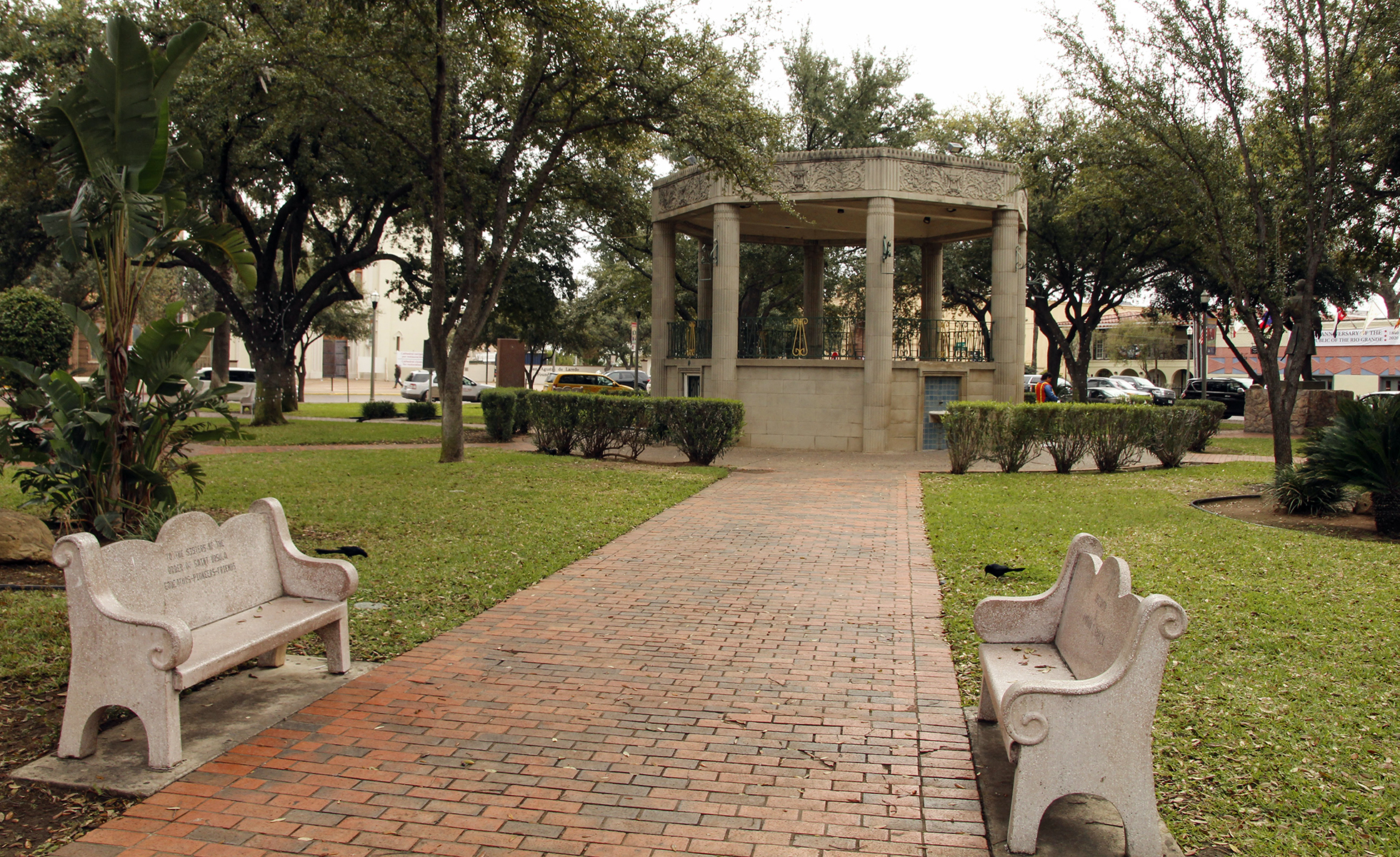
“That’s why the wall is so galling, when you have a history like us—we were our own freaking country,” Araiza says. “Could you see this happening in Boston? If this were happening in New England instead of New Spain … it’s just so obviously racist.”
To defend that heritage, local officials have worked to slow down the Trump administration. In January, Laredo’s city council denied CBP permission to survey about 1,000 acres of property along the river. Federal attorneys then sued for access. The city is working with a team of lawyers, including those representing the powerful Fasken family, a Midland oil and gas dynasty that owns a swath of land in rural Webb County. In early May, the city filed a number of novel legal arguments against CBP’s right to access its land, including that the agency was violating a mandate to build only in the highest-priority areas. In late May, the city changed course, dropping the arguments and permitting the feds to survey the property, but with the intention of reviving its claims when the administration later moves to seize the property, according to municipal officials familiar with the matter. (On July 6, Zapata County and a pair of landowners also sued the federal government, arguing the wall is a racist project in violation of the Constitution.)
There is one wild card in CBP’s wall plans for Laredo. For a 1-mile stretch near downtown, the government is considering building something called a bulkhead wall—basically a concrete levee built into the riverbank. The city has mulled the idea for years as an alternative to a fence. The structure would create a sharp drop-off to the water, and the land to its north could run level with the top of the wall to create a sort of promenade. But many local activists still oppose it. They’re against any wall, and there are hydrological concerns: In a flood, the bulkhead could shove the swelling Rio Grande farther south, endangering Nuevo Laredo residents and violating international treaty obligations. “All it does is move your flood plain, so the water goes higher on the other side. You’re going to have repercussions,” says Eddie Garza, a Laredo-based civil engineer. CBP says preliminary studies don’t show serious impacts, but it can’t say for sure until it surveys the city’s land.
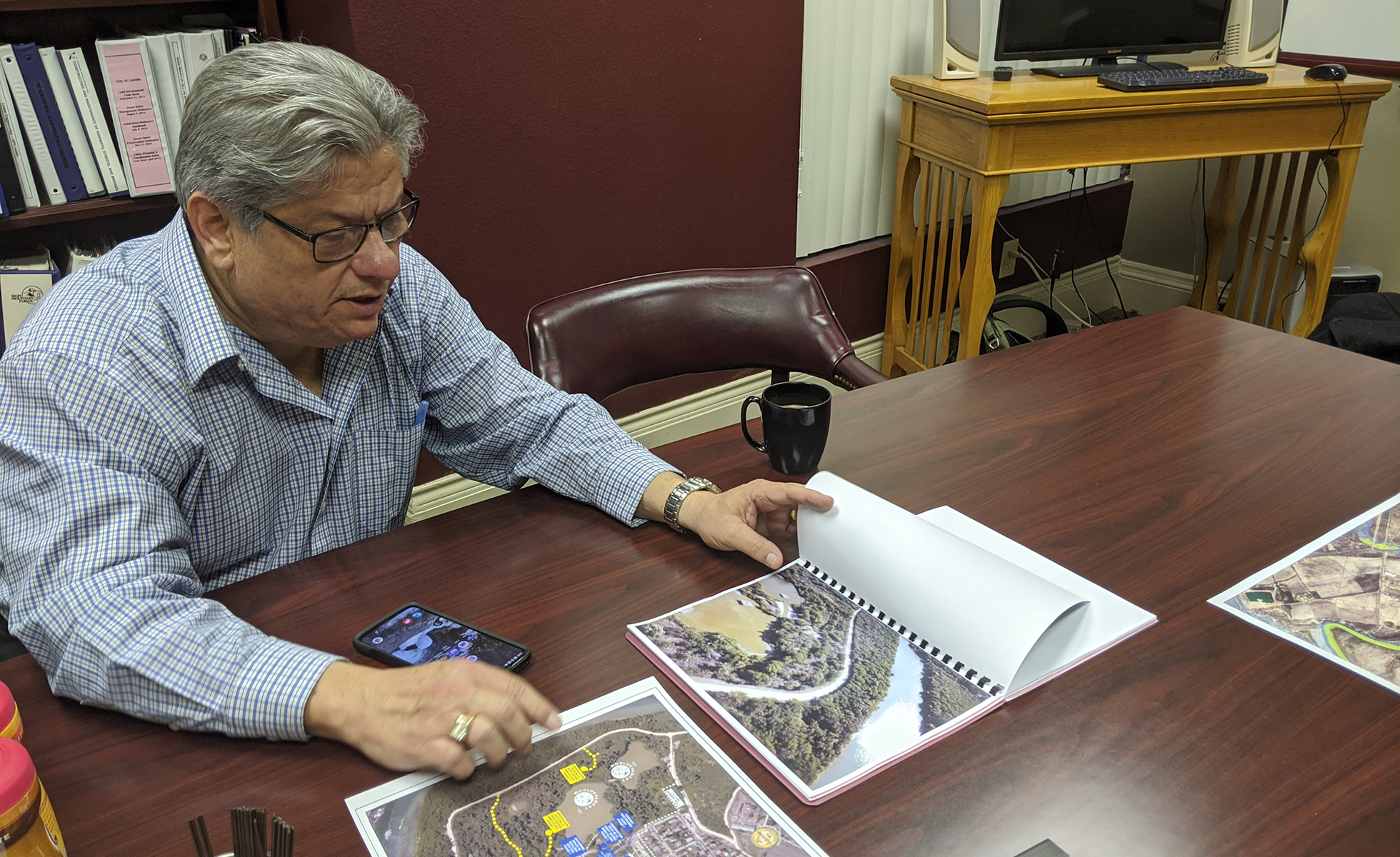
In part, the city’s fighting to protect long-term ambitions that run counter to the wall. In a 2008 master plan, the city outlined an interconnected system of trails and parks running along the river throughout Laredo—something reminiscent of Austin’s beloved greenbelts. Officials have already spent money and made some progress on the scheme, which is part of a broader effort to “reconnect Laredo with its raison d’etre,” as the plan reads. The RGISC was founded in 1994 to clean up the river—then polluted with some 25 million gallons of raw sewage a day from Nuevo Laredo—and to draw Laredoans back to their río. Pollution has been cut by 80 percent, and RGISC holds increasingly popular events like a yearly kayaking and birding festival. “We’ve turned a corner; people are starting to look at the river again,” says Cortez, the group’s director. But a border wall, by design, would sever residents from the waterway, jeopardizing years of work.
After moseying around the San Agustín plaza, I head to meet Melissa Cigarroa, board president of RGISC, at her home in Laredo. We hop into her SUV and drive south until we cross the Zapata County line, where her family owns nearly 200 riverside acres. A rolling expanse of Tamaulipan thornscrub, the property is riven with sheer, jagged escarpments offering panoramic scenes of Mexico and the snaking Rio Grande. We pull off to the side of a dirt road and hike up one such ridge to soak in the view.
Wherever possible, the Trump administration is building what CBP calls a “wall system,” a 30-foot fence that’s accompanied by a 150-foot clear-cut enforcement zone laced with sensors, overseen by camera towers, and illuminated by high-reaching floodlights. A nightmare for natural things. “They say, ‘We’re just going to take this one piece of land,’” Cigarroa tells me, “but they’re going to destroy the ecosystem, which affects the river, which affects our families. They don’t give a damn about my family or my community.”
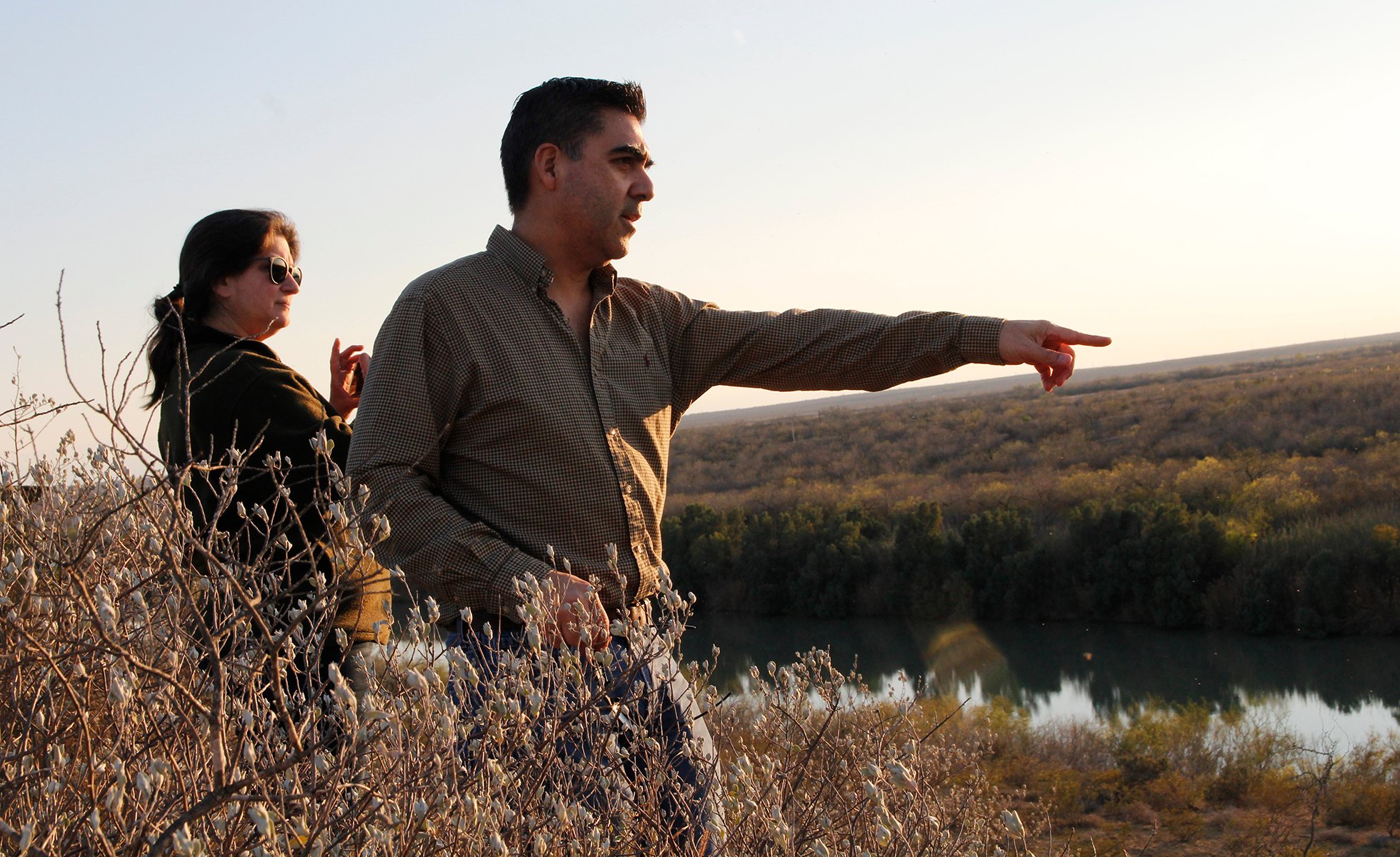
As we’re chatting, Cigarroa’s neighbor Jerry Vargas pulls up in an ATV. Vargas, 45, runs a Laredo medical equipment company, and his family bought the adjacent property in 2018. At his urging, we pile in and head over. Vargas’ love for the land is infectious: We stop to examine everything from fossilized oyster shells to the scat left behind by aoudads, wild African sheep that have established themselves in Texas and roam this land in herds known as angers. From a cliff overlooking the river, it’s so serene you can hear a fish splash in the water, and, on a clear enough day, you can see all the way to the mountains of Monterrey. “You can sit on the bluff all day and not see a single person,” he says.
We drive along and a half-dilapidated stone house comes into view, one of about seven such buildings nearby—the ruins of a mid-19th-century ranching community established by Cosme Martinez, the city councilman’s great-great-grandfather. Vargas fears construction might destabilize the ruins, and he suspects there are other, less-visible remains that no one’s found yet. D.C. bureaucrats just don’t get it, he says. “These are people pushing a pencil, not from here, who don’t know anything about what it’s like.”
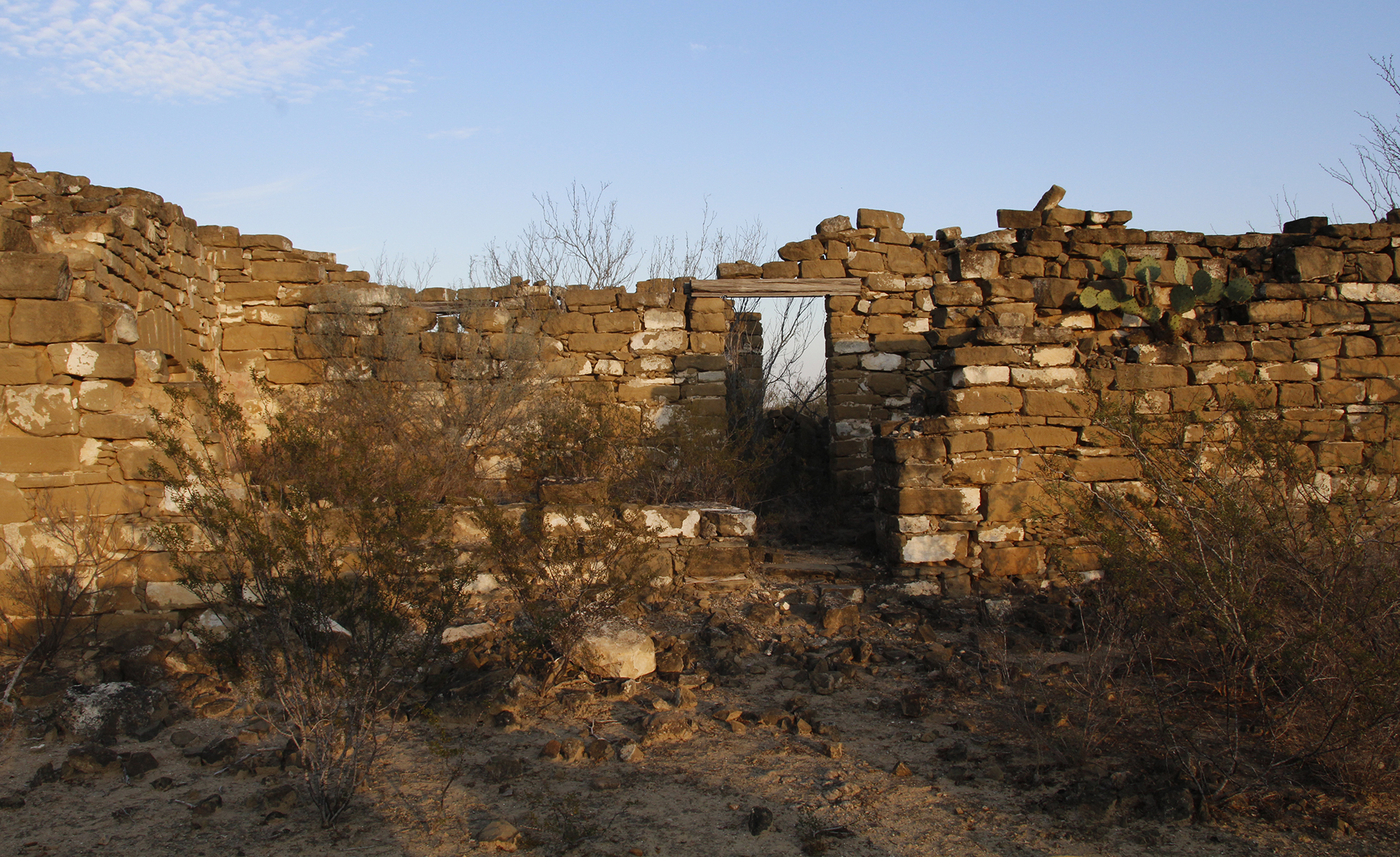
At least some federal officials, however, do appear to understand how unpopular their project is, and why. In February, CBP and other agencies involved in the wall project—the Department of Justice (DOJ) and the Army Corps of Engineers—held a meeting with Zapata County landowners, a recording of which was obtained by the Observer. The primary speaker was Paxton Warner, a DOJ attorney who’s been involved with the wall since the Bush days. Warner reflected on past fence construction that took place farther downriver. “There were a lot of unhappy people back in 2008, 2009 down in the Rio Grande Valley [when the wall] came through,” he said. But, he assured, “People learn to live with it.”
In an apparent move to assuage the crowd, Warner claimed he’s since made friendly acquaintances of some landowners his agency pissed off a decade ago. “I really enjoy meeting people,” he said. “I understand that I’m ruining your land. But I’ve got to tell you too: I’ve enjoyed meeting people.”
***
The Trump administration’s current goal is to build about 450 miles of border wall by the end of 2020. As of late May, the administration had built just 194 miles, most of that in the form of replacing shorter barriers with tall fencing in states where the border is already federally owned. Using billions of dollars that Trump transferred from the Defense Department, construction is proceeding quickly in Arizona and New Mexico, where the government is tearing apart desert landscapes studded with saguaro cacti and threatening the survival of species like the jaguar. In Texas, where nearly the entire border is in private hands, the build-out has proceeded sluggishly but shows signs of acceleration—despite the COVID-19 pandemic. As of May, Trump had completed a couple short stretches in the Rio Grande Valley, and between December and late May, the Justice Department had filed more than 30 lawsuits against landowners in South Texas.
In his 2021 proposed budget, Trump has requested an additional $2 billion for the wall. Laredo Congressman Henry Cuellar—who serves on the House appropriations committee and voted twice in favor of funding the wall in Texas before voting against it last year—is pushing bill language that would provide no new wall money, rescind last year’s funding, and impose a suite of restrictive local consultation requirements and exceptions for historical sites that could grind much construction to a halt. That will have to be hashed out with Senate Majority Leader Mitch McConnell and Trump later this year, but, regardless, much of the Texas border wall will likely remain unbuilt by 2020’s end.
Which brings us, at last, to Joe Biden.
As a senator in 2006, Biden voted for the Secure Fence Act, which eventually led to 654 miles of wall along the southern border. Now, as the presumptive Democratic presidential nominee, he’s been vague about his plans to deal with Trump’s wall. In his policy proposals, Biden pledges to end Trump’s declaration of emergency at the border, but he hasn’t outlined a day-one plan in any detail. For wall opponents, that’s troubling. If he wins, Biden’s set to inherit a dilemma: what to do about the fence that’s already in motion. There may be money from Congress lying around that has yet to be obligated into contracts, and there will surely be a number of contracts in progress, with construction at phases that could range from initial design planning to stretches of barrier that are half-built.
In 2009, to the dismay of South Texans, President Obama decided to finish President Bush’s wall. Building as late as 2011, Obama oversaw most of the 54 miles that were built in the Rio Grande Valley. Now, advocates are hoping Biden won’t repeat the actions of his former administration.
“Biden’s line is that he’s trying to bring us back to a normal time, but just going back to the Obama era isn’t going to cut it for a lot of us,” says Brett Hartl, chief political strategist with the Center for Biological Diversity Action Fund, a conservation advocacy group. Hartl wants Biden to halt all construction on day one, then look at tearing some of the existing fencing down. Ricky Garza, a McAllen-based attorney with the Texas Civil Rights Project, goes a step further. “We’d like to see a wholesale return of land to the communities from which it came. … At a minimum, we’d like to see all the existing wall torn down,” he says. “It’s not just about the absence of Trump; it’s about the presence of justice.”
The federal government has extraordinary latitude to pull out of signed contracts. According to a 2015 Congressional Research Service paper and attorneys I consulted, the feds have an inherent right to terminate contracts “for convenience”—essentially to end a deal at will for almost any reason. Contractors may haggle over settlement payments, but, ultimately, they can recoup only the costs they incurred up to the point of cancellation. The main downside is generally that the project goes unfinished—and, in this case, that would be the point.
The Biden campaign did not respond to repeated requests for comment for this story.
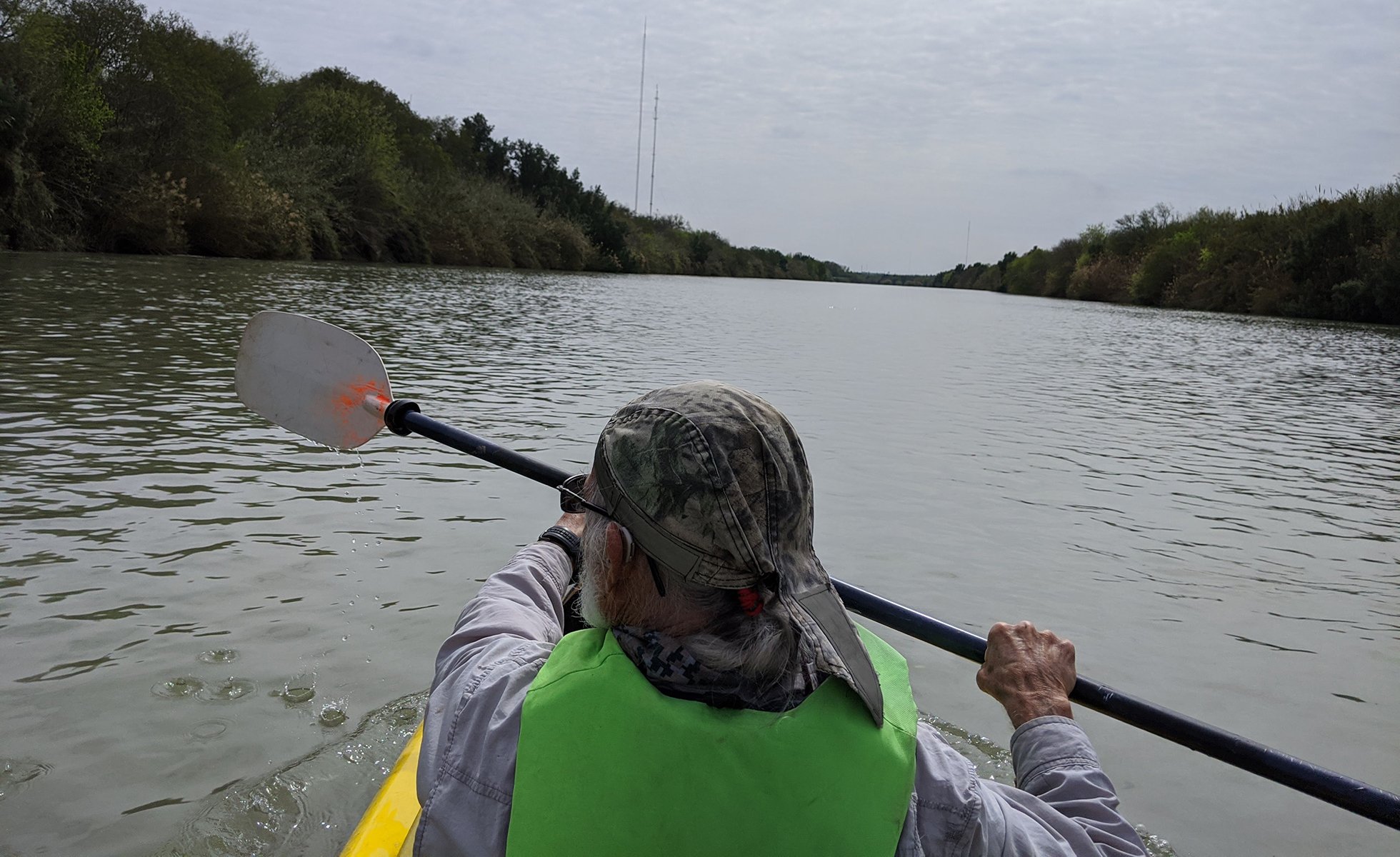
Back in Laredo, before I return to Austin, I clamber into a bright yellow kayak with Tom Vaughan, a retired biology professor at Laredo’s Texas A&M International University who’s agreed to show me the river up close. Sporting a camo do-rag and sunglasses, the septuagenarian is all lean muscle and far more fit for rowing than me.
We put in upstream of the bend around Laredo College, not far from el paso de los indios. As we row, Vaughan tells me about the unusual number of mussel species found in this stretch of the Rio Grande. Cormorants take flight as we approach. We glide beneath the international bridge, where Pelosi spoke at the abrazo ceremony, tracing the same route as the protesters. All is peaceful. After an hour or so, we reach the end of our route, where Zacate Creek pours into the Rio Grande. We hew back toward American soil, haul the kayak ashore, and scramble up the steep riverbank. Just a short trudge north, Vaughan’s Toyota pickup is waiting for us in a dirt lot. Nothing stands in our way.
Read more from the Observer:
Neglected in Care: Long before the coronavirus devastated nursing homes, inadequate staffing in for-profit Texas facilities endangered residents, leading to injuries and deaths.
COVID-19 is Surging in Rural Texas, Threatening to Overwhelm Local Hospitals: ICU beds are limited, medical providers are falling sick, and urban hospitals where small facilities transfer critical patients are running out of space.
Reform vs. Rebuild: Defunding Law Enforcement in Texas: Years of activism and a legacy of police violence are fueling demands to reimagine public safety.







